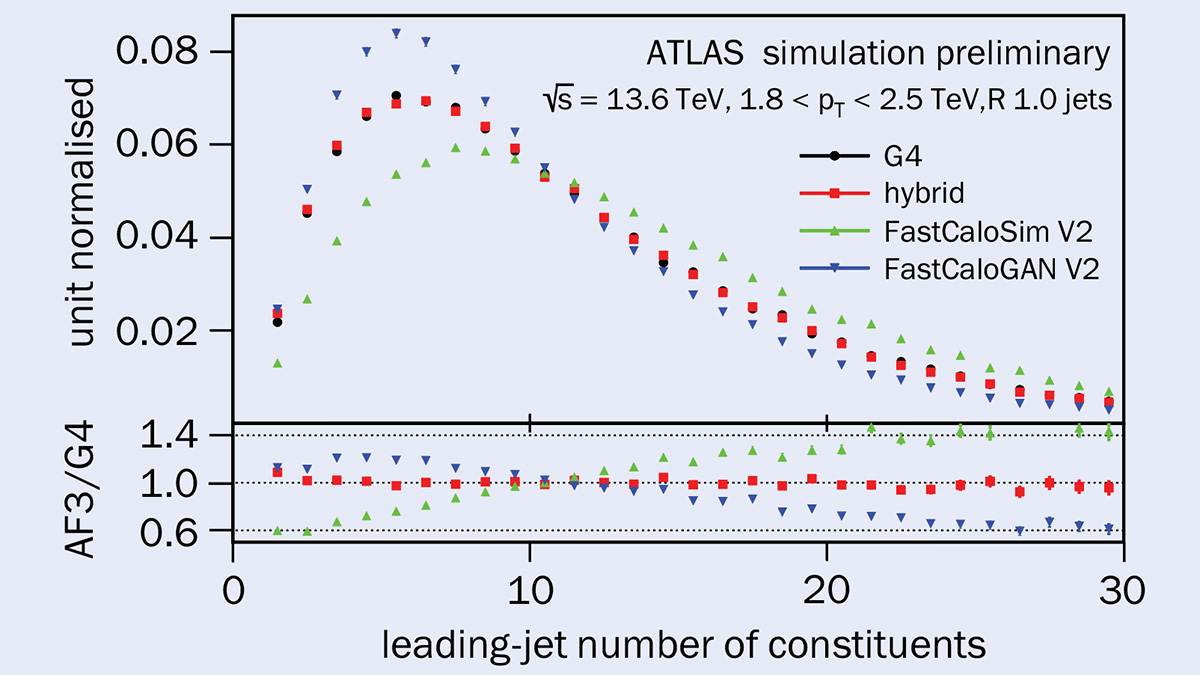
As the Large Hadron Collider (LHC) accumulates an ever-growing deluge of experimental data, the imperative for equally vast volumes of simulated collisions has surged. This necessity is propelled by the vital role of simulation in the refinement of theoretical models against observed phenomena. Each simulated event demands the complex tracking of hundreds of particles through intricate detector architectures—a computationally intense endeavor. To navigate these challenges, particularly in anticipation of the heightened data acquisition anticipated during Run 3 from 2022 to 2025, the ATLAS collaboration has unveiled a suite of sophisticated enhancements to its detector-simulation software.
At the heart of these advances is the generation of simulated events that mirror the particle showers spawned by proton-proton or heavy-ion collisions within the LHC. The simulation meticulously models the propagation of these particles through the ATLAS detector array and the resultant signal generation within its active layers. One of the most resource-intensive aspects of this process is the simulation of electromagnetic calorimeter interactions, where hadrons, photons, and electrons induce cascades of secondary particles. The complex, accordion-like geometry of the ATLAS electromagnetic calorimeter further amplifies the computational demands, consuming about 80% of the total simulation time for a standard collision event.
Amid financial and environmental concerns over the soaring costs and energy consumption of extensive computational efforts, the ATLAS team has been propelled to innovate. By implementing strategies such as the selective culling of low-energy photons and neutrons, and optimizing the simulation of photon interactions within the electromagnetic calorimeter, the collaboration has achieved nearly a twofold increase in simulation efficiency.
In parallel, ATLAS has embraced fast-simulation algorithms to further economize on computational resources. These algorithms offer a brisk yet accurate approximation of complex simulations, circumventing the need for the more computationally expensive, full-detector simulations traditionally performed using the Geant4 toolkit. A notable limitation during Run 2, however, was the insufficiently precise modeling of certain physics observables with fast simulation methods.
Enter AtlFast3, an innovative fast-simulation toolkit forged for Run 3. AtlFast3 simulates the entire ATLAS detector, employing a sophisticated hybrid approach for calorimetry. FastCaloSim and FastCaloGAN, two avant-garde tools at the core of AtlFast3, specialize in the parameterization of shower development and the simulated energy response, respectively. The former leverages detailed modeling of showers, while the latter is driven by generative adversarial networks trained on Geant4-simulated showers. This strategic amalgamation ensures optimal performance across a spectrum of observables, particularly those exploring jet substructure.
The deployment of AtlFast3 marks a seminal advancement in the realm of high-precision physics simulations. Offering a speedup that oscillates between a factor of 3 for Z → ee events and an astounding factor of 15 for high-pT di-jet events, AtlFast3 stands poised to underpin the high-caliber simulation efforts of the ATLAS collaboration. This leap forward not only ensures adherence to budgetary and computational constraints but also paves the way for groundbreaking discoveries in Run 3 and beyond.
Source






